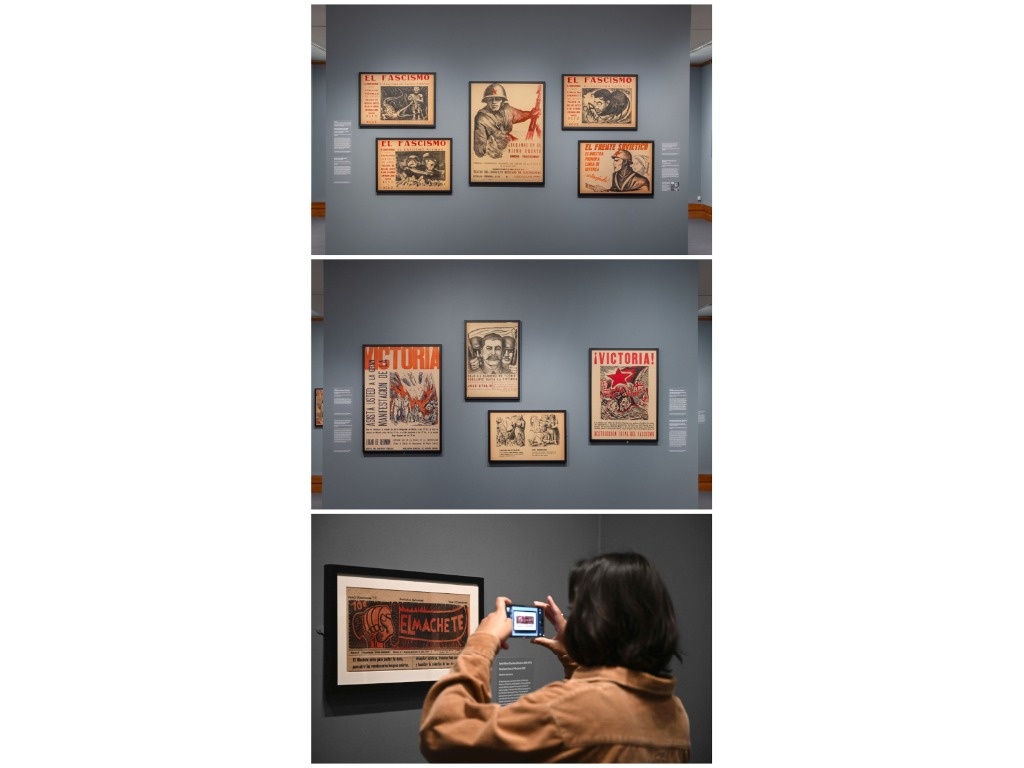New York and Washington. Five large posters call for the fight against fascism (it couldn’t be more contemporary in the United States) and mark the beginning of an extraordinary exhibition of Mexican engraving at the Metropolitan Museum of Art in New York, which includes works by all the great masters of this technique, as well as some anonymous ones, offering a bilingual look at the evolution of this art from the mid-18th century to 1960.
Mexican engravings at the forefront It is a selection of some 135 works from the Metropolitan Museum’s collection of nearly 3,000 Mexican prints, which emerged through collaboration with Jean Charlot almost a century ago.
The works include the skulls of José Guadalupe Posada, posters of solidarity with Spain during the civil war, others with the teachers’ movement, invitations to contribute funds to pay the oil debt, a cover of the magazine Face to face with the engraving by Leopoldo Méndez called The symphonic concert of skullsa fierce criticism of Rivera and Carlos Riva Palacio for the opening of Bellas Artes. Here is also the famous The American Mosquitoby Posada, with its anti-imperialist verses and flyers with corridos, including one against the American interventions. There are works by Rivera, Orozco, Siqueiros, Tamayo and Carlos Mérida. A couple of works stand out, one by Miguel Covarrubias (The Lindy Hop) and Orozco (Vaudeville not Harlem), inspired by African-American cultural life in New York. Elizabeth Catlett, Raúl Anguiano, Alberto Beltrán, Alfredo Zalce, Lola Cueto and Chávez Morado, among others, are also present.
This extraordinary exhibition evokes the continuing resonance of graphic arts in Mexico and illuminates treasures from The Met’s collection, many of which have never before been exhibited.
said Max Hollein, president of the museum. He added that the works are a reflection of the Mexican graphic tradition. deeply steeped in political and social history
what exemplify the extraordinary power of printmaking as a medium and the importance of creative expression as a response to specific cultural moments.
.
The exhibition’s curator Mark McDonald, of the Met’s Department of Drawings and Prints, told reporters that it was a painful task to select just a microscopic part of the collection, in order to offer something of what he called a democratic art
much of which was produced to be ephemeral
such as newspaper covers, posters and flyers that were part of what he called street art
.
Visual record of history
McDonald noted that the graphic medium was preferred by artists to challenge and support social and political issues
and that the engraving offers a comprehensive visual record of Mexican history
something that, he stressed, is a tradition that remains alive to this day.
The section on José Guadalupe Posada highlights his role as Founder of graphic arts in Mexico
and the majority of the exhibition is devoted to prints from the time of Posada to the mid-twentieth century. The Revolution was followed by a period of state support for graphic art and, of course, the contributions of the Taller de Gráfica Popular, famous for having been the longest-lived collective of artists of the last century
. The majority of the exhibition is devoted to works from 1890 to 1945.
The exhibition is accompanied by issues of the Met Bulletin published for the first time in English and Spanish.
Furthermore, public educational programs will be held around the exhibition, including a panel discussion, engraving workshops and a concert, among other activities.
The exhibition can be viewed on the museum’s website: metmuseum.org/exhibitions/mexican-prints-at-the-vanguard and also through their social networks with the hashtag #MetMexicanPrints.
Additionally, the archive of the entire collection of Mexican prints is accessible to students, researchers, and artists at metmuseum.org.
#democratic #art #Mexican #engraving #display #Met #York
– 2024-09-13 03:57:01
